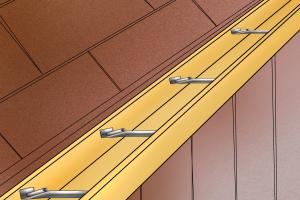Ultimate Guide on How to Fix a Sagging Gutter: Step-by-Step Solutions

-
Quick Links:
- Introduction
- Understanding Sagging Gutters
- Common Causes of Sagging Gutters
- Tools and Materials Needed
- Step-by-Step Guide to Fix a Sagging Gutter
- Preventative Measures
- Case Studies
- Expert Insights
- FAQs
Introduction
Sagging gutters can lead to serious water damage if left unaddressed. They not only affect the appearance of your home but can also compromise its structural integrity. This comprehensive guide will walk you through the process of fixing sagging gutters, ensuring your home remains safe and dry.
Understanding Sagging Gutters
Gutters play a crucial role in diverting rainwater away from your home’s foundation. When they sag, they can pool water, leading to clogs and potential leaks. Understanding how gutters work is essential for identifying the issue and executing the correct repairs.
Common Causes of Sagging Gutters
There are several reasons why gutters sag, including:
- Improper installation
- Accumulation of debris
- Excess weight from standing water
- Corrosion of gutter materials
- Improper slope
Tools and Materials Needed
Before starting the repair, gather the necessary tools and materials:
- Ladder
- Hacksaw or gutter cutter
- Drill
- Gutter brackets and screws
- Sealant
- Safety goggles and gloves
Step-by-Step Guide to Fix a Sagging Gutter
Follow these steps to fix your sagging gutters:
Step 1: Safety First
Ensure your safety by using a sturdy ladder and wearing protective gear.
Step 2: Inspect the Gutters
Check for loose brackets, debris, and standing water. This inspection will help you identify the specific issues causing the sag.
Step 3: Clean the Gutters
Remove debris, leaves, and dirt from the gutters to ensure proper water flow.
Step 4: Adjust the Slope
Ensure your gutters have a slight slope (about 1/4 inch for every 10 feet) towards the downspouts. Use a level to check this.
Step 5: Reinforce with Additional Brackets
If brackets are loose or missing, add new ones to provide additional support.
Step 6: Repair or Replace Sections
If sections of the gutter are damaged, consider repairing them with sealant or replacing them entirely, especially if they are rusted or cracked.
Step 7: Properly Seal Joints
Use sealant on joints to prevent leaks. Make sure to let it cure properly.
Step 8: Final Inspection
After repairs, inspect the gutters to ensure they are securely in place and functioning as intended.
Preventative Measures
To prevent future sagging, consider the following maintenance tips:
- Regularly clean gutters to prevent debris buildup.
- Install gutter guards to reduce the frequency of cleaning.
- Inspect gutters and downspouts after heavy rainfall.
Case Studies
Research shows that homes with properly maintained gutters have 50% less risk of foundation damage. One case study in Ohio illustrated that homeowners who regularly maintained their gutters saved over $2,000 in repairs over a decade.
Expert Insights
According to roofing experts, “Regular inspections and maintenance of gutters can extend their life significantly, preventing costly repairs down the line.”
FAQs
1. How often should I clean my gutters?
It's recommended to clean your gutters at least twice a year, especially during spring and fall.
2. What tools do I need to fix sagging gutters?
You will need a ladder, drill, sealant, and possibly new brackets or sections of gutter.
3. Can I fix sagging gutters myself?
Yes, with the right tools and safety precautions, you can fix sagging gutters yourself.
4. What happens if I don't fix my sagging gutters?
Neglecting sagging gutters can lead to water damage, mold growth, and costly repairs.
5. How do I know if my gutters are sagging?
Look for visible dips, pooling water, or loose brackets.
6. Are there professional services for gutter repair?
Yes, many roofing and gutter companies offer professional repair services.
7. What's the best material for gutters?
Aluminum and vinyl are popular choices due to their durability and resistance to rust.
8. How can I prevent my gutters from sagging again?
Regular cleaning, proper installation, and using gutter guards can help prevent sagging.
9. How long do gutters typically last?
With proper maintenance, gutters can last anywhere from 20 to 50 years depending on the material.
10. Can heavy rain cause gutters to sag?
Yes, heavy rain can lead to water pooling in gutters, increasing weight and causing sagging.
Random Reads